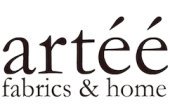Gimp is a narrow decorative trim that is often used to add visual interest to a variety of home decorating projects. Gimp is usually made of fabric, plastic or metal and is available in a wide variety of colors and patterns. Gimp is used to add a decorative touch to window treatments, upholstery, pillows, rugs, lampshades, baskets, wall hangings, clothing and accessories, DIY projects and outdoor furniture. Gimp can also be used to border, edge or as an accent piece. It is often used in combination with other decorative elements such as tassels, fringes, beads, and embroidery for added visual interest.
- Upholstery: Gimp can be used to add a decorative trim to furniture upholstery, such as on the edge of a sofa or armchair.
- Window treatments: Gimp can be used to add a decorative trim to window treatments such as curtains, valances, and roman shades.
- Pillows: Gimp can be used to add a decorative trim to pillows, such as on the edges or as a border.
- Rugs: Gimp can be used to add a decorative trim to rugs, such as on the edges or as a border.
- Lampshades: Gimp can be used to add a decorative trim to lampshades, such as on the edges or as a border.
- Baskets: Gimp can be used to add a decorative trim to baskets, such as on the edges or as a border.
- Wall hangings: Gimp can be used to add a decorative trim to wall hangings, such as on the edges or as a border.
- Clothing and accessories : Gimp can be used to add a decorative trim to clothing and accessories, such as on the edges of a scarf or a purse.
- DIY projects: Gimp can be used in a variety of DIY projects such as macrame wall hangings, woven baskets, or tassel garlands.
- Outdoor furniture : Gimp can be used to add a decorative trim to outdoor furniture such as on the edges of a hammock or as a border.
It's worth noting that gimp comes in different widths and materials such as fabric, plastic and metal. Gimp can also be painted or dyed to match the color scheme of the room or project.
